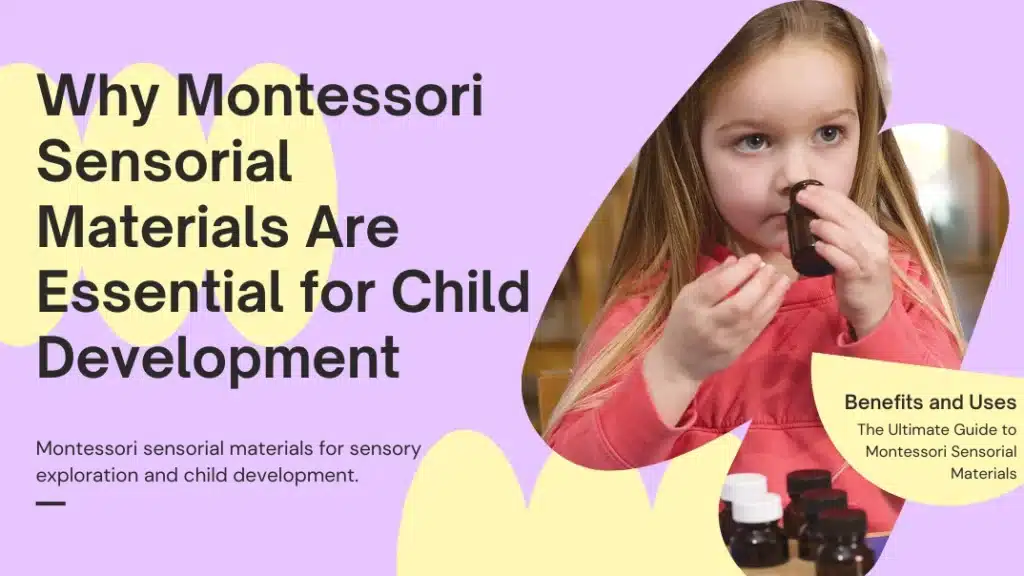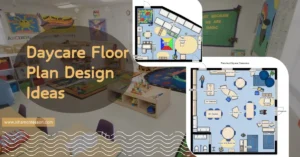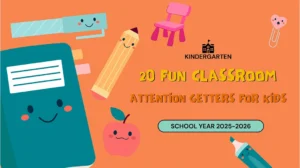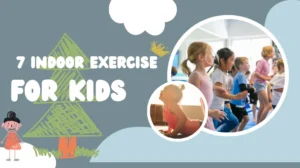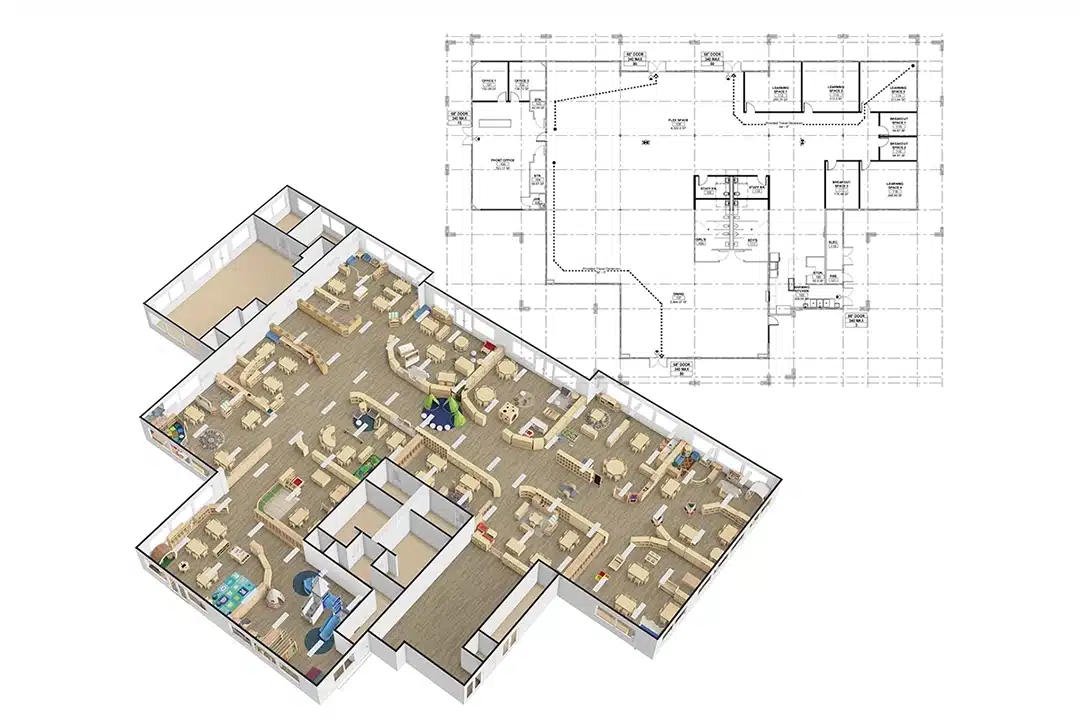Introduction
As parents and educators, we all want children to thrive, but sometimes, knowing how to nurture their senses effectively is challenging. Traditional learning tools often focus solely on academic skills, leaving out the crucial aspect of sensory development, which forms the foundation for a child’s overall growth.
In a Montessori classroom, children don’t just learn through books but explore the world around them using carefully designed tools that enhance their sight, touch, hearing, smell, and even taste. Montessori sensorial materials provide this opportunity to help children sharpen their senses while developing critical cognitive and motor skills. Without these tools, children may miss the hands-on experiences that bring learning to life.
Montessori sensorial materials bridge this gap by offering practical, sensory-based activities that empower children to understand and interact with their environment. In this guide, we’ll explore the purpose of these materials, how they’re presented in the classroom, and why they’re essential for child development. Whether you’re a parent, teacher, or just curious about Montessori education, this overview will show you how these tools unlock the full potential of a child’s senses.

What is Sensorial in the Montessori Method?
Sensorial education, as taught in the Montessori method, is a cornerstone of early childhood learning. It focuses on helping children understand their environment through their senses, including sight, hearing, touch, smell, and taste. By isolating and refining these senses, children develop critical observation skills and gain a deeper understanding of the world around them.
Maria Montessori believed that children naturally learn through sensory experiences. She emphasized the importance of providing tools and activities that stimulate the senses in a structured way. This approach enhances sensory perception and lays the foundation for cognitive development, as sensory input is closely linked to memory, focus, and decision-making.
Sensorial materials play a vital role in a Montessori classroom. These tools are carefully designed to engage children in hands-on exploration, allowing them to classify, compare, and analyze the sensory information they receive.
Purpose of Sensorial Materials in Montessori Education
The primary purpose of Montessori sensorial materials is to sharpen children’s senses and build a strong sensory foundation for learning. These materials isolate specific sensory qualities, such as size, color, texture, or sound, enabling children to focus on one concept at a time. This isolation helps children better understand and differentiate the characteristics of the objects in their environment.
- Refining the Senses
Montessori sensorial materials help children sharpen their senses by focusing on specific qualities, such as size, shape, texture, color, and sound. Through this process, children develop a deeper awareness and understanding of the world around them. - Building Cognitive Skills
These materials encourage children to classify, compare, and analyze information. Activities like stacking the Pink Tower or matching Color Tablets help children develop problem-solving, logical thinking, and decision-making skills, which are essential for future academic success. - Fostering Independence
Montessori sensorial materials are self-correcting, allowing children to identify and fix their mistakes without adult interference. This feature nurtures independence and boosts their confidence as they take ownership of their learning process. - Preparing for Abstract Learning
Montessori sensorial materials lay the groundwork for abstract concepts like math, language, and science. For example, understanding dimensions through the Broad Stair prepares children for geometry, while identifying patterns builds skills for reading and writing. - Promoting Joy in Exploration
By engaging in hands-on activities, children experience the joy of discovery. This intrinsic motivation encourages them to explore further, fostering curiosity and creativity that extend beyond the classroom.


What are the Five Sense Organs of Montessori?
In Montessori education, sensory exploration is fundamental to a child’s development. The five senses organs—sight, hearing, touch, smell, and taste—are deeply integrated using Montessori sensorial materials. These sensorial materials in Montessori classrooms are carefully designed to isolate each sense, allowing children to focus on specific sensory inputs and refine their perception of the world around them.
1. Visual (Sight)
The sense of sight is vital for observing and interpreting size, shape, and color. In the Montessori method, children use Montessori sensorial materials to sharpen their visual discrimination. Activities involving Maria Montessori sensorial materials help children recognize patterns, differentiate proportions, and understand spatial relationships. For example, these sensory materials Montessori classrooms employ prepare children for more complex skills in geometry and math.
2. Auditory (Hearing)
Hearing enables children to detect and differentiate sounds, tones, and rhythms. The purpose of Montessori sensorial materials designed for auditory development is to enhance children’s listening skills and promote language acquisition. Through structured auditory activities, children in a Montessori classroom gain better sound awareness, crucial for effective communication and musical learning.
3. Tactile (Touch)
Touch allows children to explore textures, temperatures, and physical forms. The material sensorial Montessori approach encourages children to use their tactile senses to identify differences in texture, such as rough and smooth, soft and hard. These experiences, supported by various tools in the Montessori sensorial materials list, help develop fine motor skills and spatial awareness.
4. Olfactory (Smell)
The sense of smell connects children to their environment through scent identification. Montessori sensorial materials presentation includes activities where children identify and compare scents, helping to develop olfactory awareness. This skill sharpens sensory perception and strengthens memory and emotional connections to the world.
5. Gustatory (Taste)
Taste provides children with opportunities to identify and enjoy different flavors. Montessori classrooms use Montessori sensorial materials for gustatory exploration to encourage children to explore sweet, salty, sour, and bitter tastes. This helps them refine their taste buds and appreciate a variety of cultural and culinary experiences.
By focusing on these five senses, Montessori education provides children a structured way to understand and interact with their environment. Each sense uniquely shapes their experiences, laying a strong foundation for intellectual and emotional growth.

List of Montessori Sensorial Materials
Montessori sensorial materials enhance a child’s sensory perception by isolating and refining their senses. Each material targets a specific sensory quality, such as size, texture, sound, or taste, enabling children to explore and understand these attributes more deeply. Below is an expanded list of Montessori sensorial materials, categorized by the sense they develop, with detailed descriptions of their purpose and usage.
Categorized List of Montessori Sensorial Materials
| Category | Material Name | Purpose and Usage |
|---|---|---|
| Visual Materials | Pink Tower | A set of 10 pink cubes that decrease in size, helping children develop visual discrimination of size and proportion. |
| Broad Stair (Brown Stair) | A series of 10 prisms that differ in width, enhancing a child’s ability to compare dimensions and understand spatial relationships. | |
| Color Tablets | Sets of color tiles for children to match and arrange, refining their ability to recognize and differentiate colors. | |
| Auditory Materials | Sound Cylinders | Cylinders filled with different materials that produce sounds when shaken, encouraging children to match and compare sounds. |
| Bells | A set of bells used to teach musical notes and rhythm, helping children explore auditory patterns and pitch. | |
| Tactile Materials | Touch Boards | Boards with rough and smooth textures for children to feel, enhancing their tactile discrimination and motor skills. |
| Fabric Boxes | Swatches of fabric made of different materials, like silk or wool, allowing children to identify textures through touch. | |
| Rough and Smooth Tablets | Tablets with varying degrees of roughness, helping children refine their ability to distinguish subtle differences in texture. | |
| Olfactory Materials | Smelling Jars | Jars filled with different scents, such as spices or flowers, encouraging children to identify and match smells. |
| Gustatory Materials | Tasting Bottles | Bottles containing solutions of sweet, salty, sour, and bitter flavors, allowing children to explore and classify tastes. |
| Stereognostic Materials | Geometric Solids | Three-dimensional shapes like cubes, spheres, and cones, used to develop spatial awareness and understanding of form. |
| Mystery Bag | A bag filled with familiar objects for children to identify by touch alone, enhancing their stereognostic sense. |
Key Features of Montessori Sensorial Materials
- Isolation of Specific Qualities
- Each material focuses on a single sensory characteristic, such as size (Pink Tower) or sound (Sound Cylinders), ensuring children can concentrate on one concept.
- Self-Correcting Design
- Many Montessori sensorial materials , like the Pink Tower or Sound Cylinders, are self-correcting, allowing children to identify and fix mistakes independently without adult intervention.
- Sequential Progression
- Montessori materials are designed to progress from simple to complex, enabling children to build foundational sensory skills that prepare them for abstract learning.
- Hands-On Learning
- These materials encourage active exploration, allowing children to use their hands and senses to engage with concepts directly, fostering more profound understanding.
The Value of Sensorial Materials in Montessori Classrooms
The Montessori sensorial materials list provides educators with essential tools for children’s sensory and cognitive development. These sensorial materials in Montessori classrooms foster independence, curiosity, and critical thinking skills by combining sensory exploration with purposeful learning.
From iconic tools like the Pink Tower to versatile activities with Smelling Jars and Geometric Solids, these Montessori sensorial materials enable children to develop their senses while building a foundation for advanced math, language, and science academic skills.
The Role of Sensorial Activities in Montessori Classrooms
Montessori sensorial materials activities are at the heart of Montessori education. They offer children the opportunity to explore their environment through their senses. These activities are carefully crafted to build children’s understanding of the world, refine their sensory perception, and nurture independence.
Why Are Sensorial Activities Important?
- Developing Observation Skills: Sensorial activities teach children to observe their surroundings, enabling them to notice details such as size, shape, sound, and texture.
- Building Cognitive Abilities: Engaging with Montessori sensorial materials encourages children to classify, compare, and analyze information and develop problem-solving skills.
- Laying the Foundation for Academic Learning: By isolating specific qualities like weight, temperature, and sound, these activities prepare children for abstract concepts in subjects like math, language, and science.
Practical Examples of Sensorial Activities
Below are engaging sensorial activities commonly found in Montessori classrooms:
| Activity Name | Purpose | Outcome for Children |
|---|---|---|
| Pink Tower Stacking | Stacking 10 pink cubes in descending order of size. | Improves spatial awareness, hand-eye coordination, and size discrimination. |
| Matching Sound Cylinders | Pairing cylinders by listening to their sounds. | Enhances auditory discrimination and sharpens listening skills. |
| Exploring Texture with Touch Boards | Identifying differences between smooth and rough surfaces. | Develops tactile sensitivity and attention to detail. |
| Smelling Jar Guessing Game | Matching jars by scent, such as lavender or cinnamon. | Sharpens the sense of smell and strengthens memory. |
| Color Tablets Sorting | Arranging color tablets from lightest to darkest shades. | Builds visual discrimination and aesthetic appreciation. |
Presentation of Montessori Sensorial Materials
The effectiveness of Montessori sensorial materials relies on how they are presented to children. A structured and thoughtful presentation helps children understand the purpose of each material, encouraging exploration and independent learning.
Step-by-Step Presentation Guidelines
- Preparation:
- Ensure materials are clean, organized, and placed in an accessible location.
- Select a quiet and distraction-free environment for the activity.
- Demonstration:
- Show children how to use the materials step by step, using slow and deliberate movements. For example:
- In the case of the Pink Tower, carry one cube at a time and place it carefully to build the tower from largest to smallest.
- Use minimal words, allowing actions to guide the child’s focus.
- Show children how to use the materials step by step, using slow and deliberate movements. For example:
- Encouraging Exploration:
- Once the demonstration is complete, invite the child to try the activity independently.
- Avoid correcting mistakes immediately; let the child identify and rectify errors through self-correction.
Incorporating Activities with Montessori sensorial materials
- Pink Tower Challenge: After stacking the Pink Tower, ask the child to sort the cubes by size in reverse order, stimulating further observation and problem-solving.
- Sound Cylinder Matching Race: Add an element of excitement by timing children as they match sound cylinders, encouraging focus under gentle pressure.
- Texture Hunt: Pair Fabric Boxes with classroom objects of similar textures, such as matching silk with a scarf or cotton with a cloth.
Tips for Successful Presentations
- Focus on the Child’s Pace: Ensure that presentations are not rushed, allowing children to observe and process each step.
- Emphasize Autonomy: Use the materials’ self-correcting design to encourage independent learning and build confidence.
- Observe and Adapt: Pay close attention to the child’s level of engagement and adjust your approach if needed.
How Sensorial Materials Support Child Development
Montessori sensorial materials are not just tools for sensory refinement; they significantly support a child’s overall development. These materials help children explore their environment, process sensory input, and build essential life skills.
The Impact of Sensorial Materials on Development
- Cognitive Development:
- Sensorial materials teach children to analyze and classify sensory data, building logical thinking skills. For instance, working with the Broad Stair introduces concepts of size and proportion that later support mathematical understanding.
- Emotional Growth:
- Children gain confidence and a sense of accomplishment as they master sensorial tasks independently. This promotes resilience and a positive attitude toward challenges.
- Social Development:
- Group activities with Montessori sensorial materials , such as matching Sound Cylinders in pairs, teach collaboration and respect for peers.
Real-World Applications of Skills Gained
The skills children develop with Montessori sensorial materials have practical applications in daily life:
| Skill | Application in Real Life |
|---|---|
| Problem-Solving | Identifying solutions to puzzles or challenges, such as sorting objects or assembling toys. |
| Focus and Concentration | Completing tasks that require sustained attention, like reading or drawing. |
| Language Development | Describing textures, colors, and shapes enriches vocabulary and communication skills. |
| Spatial Awareness | Understanding dimensions and shapes aids in tasks like packing, building, or organizing. |
How Sensorial Materials Prepare Children for the Future
Montessori sensorial materials provide a bridge between concrete sensory experiences and abstract learning. By engaging children in hands-on activities, they foster:
- A strong foundation for academic subjects like math, geometry, and science.
- The ability to observe, analyze, and respond to their surroundings critically.
- Lifelong skills such as creativity, focus, and problem-solving that benefit them in any context.
The Importance of the Sensorial Area in Montessori Classrooms
The sensorial area in a Montessori classroom is more than just a designated space for sensory materials—it is a vital component of the Montessori learning environment. This area is carefully curated to meet children’s developmental needs, fostering growth in their cognitive, emotional, and social skills while providing opportunities for sensory exploration.
Encouraging Sensory Exploration
The primary purpose of the sensorial area is to allow children to engage their senses in meaningful ways. Materials in this area are designed to refine a child’s perception of qualities such as size, shape, texture, Sound, and color. For example, the Pink Tower helps children understand size relationships, while the Sound Cylinders train auditory discrimination. Children can focus on one concept at a time by isolating specific sensory qualities, making learning effective and enjoyable.
The sensorial area also encourages children to explore independently. Unlike traditional teaching methods that rely heavily on instruction, the Montessori approach emphasizes hands-on learning. The materials in this area are self-correcting, allowing children to identify and fix mistakes independently. This process fosters a sense of autonomy and boosts their confidence as they master new skills through trial and error.
Laying the Foundation for Future Learning
The experiences children gain in the sensorial area form the basis for more advanced academic skills. For instance, working with Geometric Solids enhances spatial awareness and prepares children for geometry. Similarly, sorting and arranging Color Tablets helps children develop visual discrimination, essential for reading and writing. These materials bridge the gap between concrete sensory experiences and abstract thinking, ensuring children are well-prepared for future math, language, and science challenges.
Moreover, the sensorial area is instrumental in developing critical thinking and problem-solving skills. When children compare, classify, and organize materials like the Broad Stair or Long Rods, they exercise their logical reasoning abilities. This lays a strong foundation for analyzing and solving real-world problems later in life.
Promoting Emotional and Social Growth
Beyond academic benefits, the sensorial area is crucial in nurturing emotional and social development. Engaging with materials in a calm, structured environment helps children develop patience, concentration, and persistence. Working independently teaches them to manage frustration and celebrate their achievements, building resilience and self-esteem.
The sensorial area also fosters collaboration and respect among peers. Children often share materials or work together to solve challenges in group settings, such as matching Sound Cylinders or arranging Rough and Smooth Tablets. These interactions teach them to communicate effectively, take turns, and value the contributions of others, skills that are essential for healthy social relationships.
Creating an Inviting Learning Environment
A well-designed sensorial area is inviting, organized, and purposeful. Materials are displayed on open, low shelves to encourage accessibility, allowing children to choose their interests. The space is calm and uncluttered, with natural lighting and carefully arranged tools that appeal to a child’s sense of order and aesthetics.
This thoughtful design enhances the child’s learning experience and reinforces Montessori’s core principle of respecting the child’s independence and innate curiosity. The sensorial area becomes a safe space where children can experiment, learn, and grow at their own pace.
The sensorial area in Montessori classrooms is much more than a collection of materials—it is a dynamic and transformative environment. Engaging children’s senses supports holistic development, prepares them for academic success, and cultivates essential life skills like independence, focus, and collaboration. Through purposeful design and meaningful activities, the sensorial area fulfills its role as a cornerstone of Montessori education.



8. Frequently Used Sensorial Materials in Montessori Classrooms
Montessori classrooms feature a variety of sensorial materials, but specific tools stand out for their versatility and frequent use. These materials are integral to fostering sensory development and cognitive growth in children.
| Material Name | Function | Importance in Daily Use |
|---|---|---|
| Geometric Solids | Introduce children to three-dimensional shapes like cubes, spheres, and cones. | Develop spatial awareness and prepare children for geometry by helping them understand the properties of solids. |
| Pink Tower | Help children refine their sense of size and proportion by stacking 10 pink cubes from largest to smallest. | Enhance fine motor skills, hand-eye coordination, and the ability to compare dimensions. |
| Broad Stair (Brown Stair) | Teach children to distinguish differences in width using 10 rectangular prisms of equal length but varying width. | Build an understanding of dimensions and prepare children for mathematical concepts. |
| Color Tablets | Allow children to identify, match, and sort colors into gradients. | Develop visual discrimination and foster an appreciation for color patterns and harmony. |
| Sound Cylinders | Enable children to match pairs of cylinders based on the sounds they produce when shaken. | Strengthen auditory discrimination and improve focus and concentration. |
| Smelling Jars | Let children explore different scents and match them. | Sharpen the sense of smell and enhance memory by associating scents with objects or experiences. |
| Fabric Boxes | Encourage children to feel and identify different textures, such as silk, wool, and cotton. | Refine the tactile sense and build descriptive vocabulary. |
| Long Rods | Teach children to compare lengths by arranging rods from shortest to longest. | Lay the groundwork for understanding measurement and patterns. |
Why These Materials Are Essential
- Versatility: These materials can be used in multiple ways, allowing children to revisit and deepen their understanding of sensory concepts.
- Hands-On Learning: They provide tangible experiences that engage the senses directly, making abstract concepts easier to grasp.
- Preparation for Advanced Learning: Tools like the Broad Stair and Long Rods prepare children for more complex ideas in geometry and math, while the Color Tablets enhance visual literacy.
By incorporating these frequently used materials into daily routines, Montessori classrooms ensure that children receive the sensory experiences they need to grow into confident, capable learners.
The Philosophy of Maria Montessori on Sensorial Learning
Maria Montessori’s education philosophy emphasizes sensory exploration’s role in a child’s development. She viewed the senses as the gateway to knowledge, believing children learn best by engaging with the world around them through sight, touch, hearing, smell, and taste. This foundational idea shaped the creation of Montessori sensorial materials, specifically designed to help children refine their sensory perception while laying the groundwork for academic learning.
Maria Montessori’s Insights on Sensory Education
Maria Montessori believed that the mind is built through the senses. She famously stated, “Nothing comes to the mind except through the senses.” By providing children with structured, hands-on sensory experiences, Montessori created a learning environment where children could explore and understand abstract concepts through concrete means.
For example:
- To refine sensory awareness, sensory materials in Montessori classrooms isolate one quality, such as size, shape, or texture.
- Maria Montessori sensorial materials like the Pink Tower help children visually differentiate sizes, a skill that later supports mathematical understanding.
- Activities with material sensorial Montessori tools like sound cylinders develop auditory skills and prepare children for language acquisition.
These tools embody her belief that sensory education is about understanding the world and preparing the mind for higher-order thinking.
How Sensorial Materials Embody Her Philosophy
The design of Montessori sensorial materials reflects her educational principles. Each tool isolates a single sensory property, such as texture (Fabric Boxes) or sound (Sound Cylinders), allowing children to focus on one concept at a time.
By working with these materials:
- Children gain the ability to classify and organize sensory input, developing logical reasoning.
- Montessori sensorial materials presentation encourages self-directed learning, where children explore independently.
- Tools like Geometric Solids introduce children to the properties of 3D shapes, laying a strong foundation for subjects like geometry and science.
Through this hands-on approach, Maria Montessori’s sensorial materials nurture independence, creativity, and a lifelong love for learning.


Sensorial vs. Traditional Learning Materials
The Montessori approach to sensory education is distinct from traditional teaching methods. While conventional learning tools often emphasize rote memorization, the sensory materials Montessori classrooms use are designed to engage the senses actively, making abstract concepts tangible and accessible to children.
| Aspect | Montessori Sensorial Materials | Traditional Learning Materials |
|---|---|---|
| Focus | Isolate one sensory quality at a time (e.g., size, sound, texture). | Often focus on multiple concepts simultaneously, which can overwhelm children. |
| Engagement | Hands-on, sensory-based exploration. | Mostly passive learning, such as listening or observing. |
| Self-Correction | Built-in self-correcting design allows children to identify mistakes independently. | Relies on teacher intervention for correction. |
| Purpose | Develop sensory awareness, critical thinking, and independence. | Focus on knowledge retention without deep exploration. |
Advantages of Montessori Sensorial Materials
- Hands-On Learning: Unlike traditional tools, Montessori sensorial materials actively involve children in exploring concepts like dimensions (Broad Stair) and colors (Color Tablets). This interaction fosters more profound understanding and retention.
- Fostering Independence: Tools like the Pink Tower are self-correcting, allowing children to work without constant guidance. This builds confidence and encourages problem-solving.
- Laying the Foundation for Advanced Learning: Activities with sensorial Montessori materials, such as sorting sound cylinders, enhance sensory perception and support language, math, and science skills.
- Promoting Creativity and Curiosity: The engaging design of Montessori sensory materials motivates children to explore freely, nurturing intrinsic motivation and a love for learning.
Why Montessori Sensorial Materials Outshine Traditional Tools
- Concrete Learning Experiences: By isolating sensory properties, Montessori materials make abstract concepts tangible, bridging the gap between sensory input and intellectual development.
- Comprehensive Development: Using sensorial materials in Montessori classrooms refines sensory skills and enhances cognitive, emotional, and social growth.
- Child-Centered Approach: Unlike traditional methods, material sensorial Montessori tools prioritize the child’s independence, creativity, and unique learning pace.
In conclusion, the Montessori method’s reliance on sensorial materials demonstrates a revolutionary approach to education. Focusing on sensory engagement and independence empowers children to develop essential life skills while fostering a deep connection to the world around them. This child-centered, hands-on approach sets Montessori apart from traditional education, proving the timeless value of Montessori sensorial materials.
Conclusion
Montessori sensorial materials are more than just educational tools—they are the foundation of a child’s sensory and cognitive development. By isolating and refining each of the five senses, these materials allow children to explore their environment in meaningful ways. From the Pink Tower to the Sound Cylinders, every tool in the list of Montessori sensorial materials is designed to help children classify, compare, and analyze sensory data, fostering critical thinking and problem-solving skills.
The philosophy of Maria Montessori’s sensorial materials highlights the importance of hands-on, child-centered learning. Unlike traditional methods, Montessori classrooms’ sensorial materials empower children to discover and correct their mistakes independently. This unique approach promotes confidence, creativity, and a deep love for learning that extends beyond the classroom.
Furthermore, the thoughtful presentation of Montessori sensorial materials ensures that children fully engage with each activity, laying the groundwork for academic success in math, language, and science. The purpose of sensorial materials Montessori education advocates for is clear: to connect sensory exploration with intellectual growth while nurturing emotional resilience and social cooperation.
In a world where education is often rigid and test-driven, using Montessori sensorial materials is a testament to the power of sensory-based, hands-on learning. By integrating these tools into classrooms, educators can create environments that respect the child’s natural curiosity and individuality, ultimately preparing them for a lifetime of growth and achievement.
Through the timeless wisdom of Maria Montessori and the carefully crafted design of these tools, the Montessori sensorial materials list remains an invaluable resource for fostering a child’s potential. With these materials, children are not just learning but building the foundation for a brighter, more capable future.

